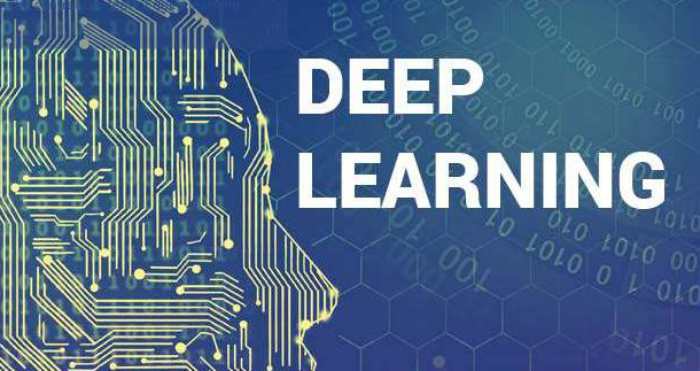The Central Concept of Deep Learning

The Central Concept of Deep Learning
Deep learning technology is a branch of machine learning that processes data using neural networks. Thanks to the popularity of gadgets like Siri and Alexa, it has become crucial in today’s society. Moreover Deep learning systems can learn independently without human training by gathering data using supervised and unsupervised techniques. Several algorithms, including backpropagation, gradient descent, momentum, and AdaGrad, can be used to train deep neural networks.
A neural network with three or more layers is a component of deep learning. The neural networks attempt to stimulate the human brain’s behaviour. A single-layer neural network is capable of estimation and prediction. The precision of predictions can be improved by adding extra hidden layers.
The typical yearly salary for a deep learning engineer is $133,580. You can learn about the typical deep-learning interview questions and responses by taking a suitable course. You will have a better chance of landing a job. But learn more about deep learning before enrolling in the course.
Table of Contents
How is Deep Learning implemented?
Artificial neural networks are another name for deep learning neural networks. Using weights, bias, and data inputs, they mimic the workings of the human brain. Together, the components accurately identify, classify, and describe the objects contained in the data.
Several layers of interconnected nodes make up deep-learning neural networks. Each layer improves upon the one before it to improve classification or prediction. Forward propagation is the method used to advance computations through neural networks.
A deep neural network’s output and input layers are referred to as visible layers. The input layer must still ingest data that needs to be processed. Within the output layers, the final prediction is made.
Moving backward is sometimes necessary to calculate prediction errors. Backpropagation is the procedure’s name based on algorithms like gradient descent. Both backpropagation and forward propagation guarantee that predictions are made, and errors are appropriately corrected.
The method explains deep neural networks in their most basic form. Deep learning is a very difficult process, though. To handle datasets or problems, several neural networks are needed.
- Recurrent neural networks RNNs, which work with sequential series data, are primarily useful for speech and natural language recognition software.
- Convolutional neural networks Applications involving image classification and computer vision frequently use convolutional neural networks. CNNs can find patterns and features in an image to support tasks like object detection or recognition.
Deep Learning Technology Application
The development of extremely effective systems for business operations can be facilitated by deep learning. Applications for deep learning can benefit people. It is very clear from the way deep learning solutions are used in real-world situations. The following list includes some business operations that deep learning technology can successfully support:
1. Virtual assistants
Deep learning-based virtual assistants like Siri or Alexa can boost workplace productivity. Users will be able to complete tasks using voice assistance. Virtual assistants can carry out many common tasks. The virtual assistants will also have more advanced interactive capabilities to engage with customers.
Even greater advantages may result from connecting deep learning-based virtual assistants to the IoT. For example, a virtual assistant will allow homeowners to unlock doors remotely. They can remotely turn it off or stream music.
The virtual assistants will need to be trained using large datasets. The use of deep learning will facilitate the detection of patterns. Deep learning can increase the effectiveness of virtual assistants because people frequently repeat the same phrases. Deep learning will therefore make it simple for virtual assistants to complete even the most difficult tasks.
2. Chatbots
Deep learning and AI-powered chatbots are now fairly common. Chatbots are becoming more human as deep learning technologies proliferate. They can interact more with customers and deliver effective customer service. Chatbots can now curate personalised responses for users thanks to deep learning.
Deep learning chatbots study datasets of conversations between people to become more effective. Normal chatbots, however, require human programmers to function. However, programmers do not have to decide how the received data is interpreted using AI-powered chatbots.
Deep learning algorithms can conclude and respond to inquiries about human performance. Deep learning technology, therefore, has a great deal of potential to excel in customer service.
3. Facial recognition
Deep machine learning algorithms are excellent for security purposes regarding facial recognition. Deep learning technology can make use of enormous face datasets. Face recognition software sometimes performs better than humans at it. The following are the basic steps for using deep learning for facial recognition:
- Face recognition
- Face position
- Extraction of features
- Matching features
In more organised datasets, deep convolutional neural networks can stack pictures. For instance, Facebook uses artificial neural networks to recognise and recognise faces using deep learning. Facebook’s DeepFace algorithm ensures that particular faces can be recognised with 97% accuracy.
4. Personalised shopping experiences
Online retailers use deep learning technologies to improve customer recommendations. Additionally, by providing better results for searches, it enhances the search experience. Additionally, customers can use visual search thanks to deep learning.
PersonalisationPersonalisation via deep learning is also possible in the world of entertainment. Deep learning technologies are capable of analysing user-consumed content. Customers can use it to receive tailored app recommendations for entertainment. This technology is used by streaming services like Netflix to deliver recommendations that fit viewers’ preferences.
5. driverless vehicles
Self-driving cars have also been made possible by deep learning. We give self-driving cars as much background information about their surroundings as we can. They can forecast the ideal moment to act, thanks to it. Moreover, Cars use computer vision systems to aid in their perception of their surroundings.
However, autonomous vehicles must be able to tell pedestrians apart from objects with similar appearances. As a result, more sophisticated algorithms are needed to train self-driving cars.
This technologies are being used by well-known brands in the automotive industry, like Tesla. However, Several other businesses, including Hyundai, Ford, and Huawei, are concentrating on advancements in this field.
Endnote
The development of deep learning technology is still in its infancy. Due to its many uses and advantages, deep learning is used for various tasks, including speech recognition, image recognition, natural language processing, and other tasks. You can get a more thorough understanding of the idea, and future uses for it by taking a deep learning course. Moreover, Enrol in a professional course immediately to learn how deep learning will affect the upcoming machine learning revolution.
Also read:- Best AI Tools Right Now You Need To Know




